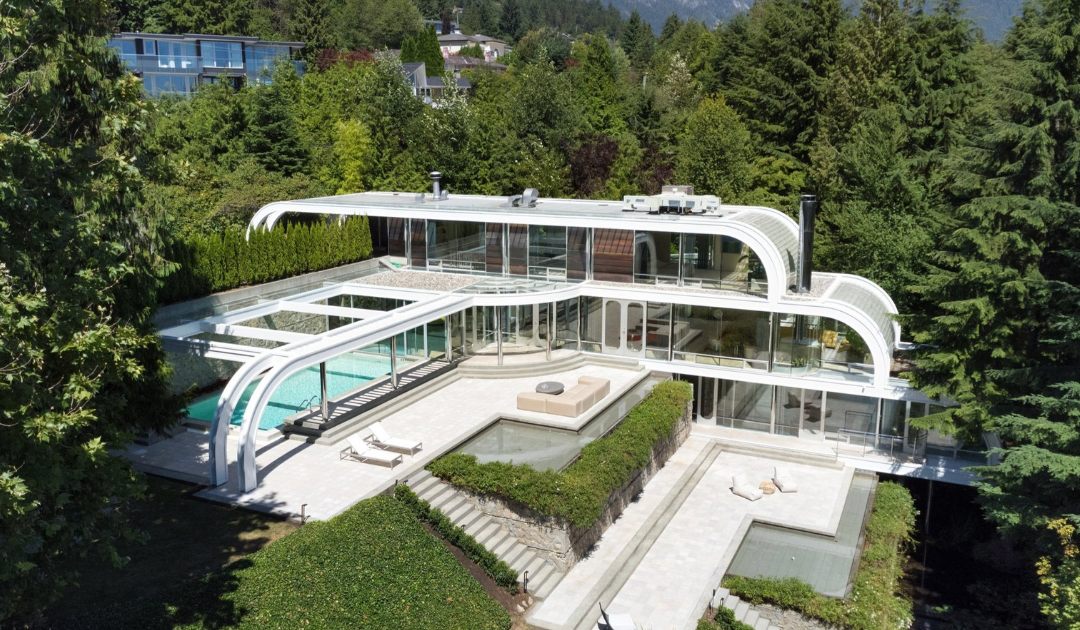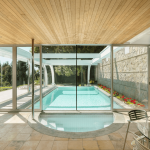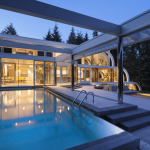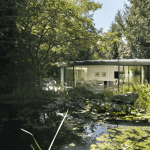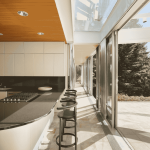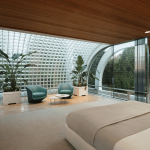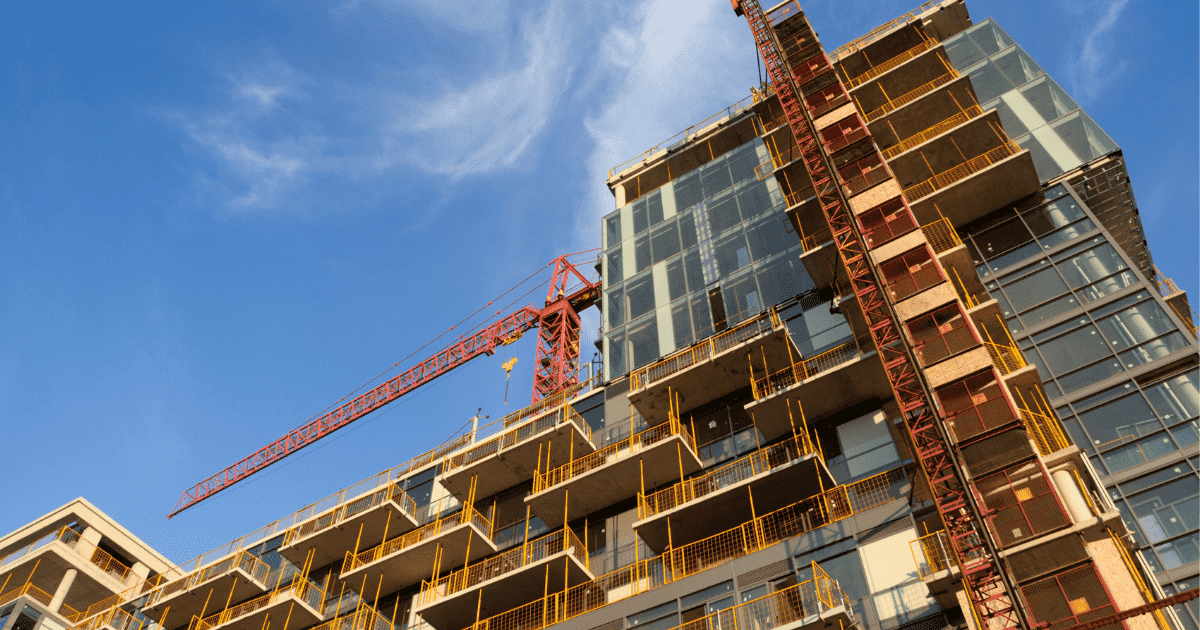Photo courtesy Geoff Taylor
Eppich House II, a landmark West Vancouver home designed in 1988 by renowned Canadian architect Arthur Erickson, was recently listed by Realtor Geoff Taylor of Rennie at $6-million—not exactly a home for the average buyer.
West Coast Modern, a distinctive architectural style known for its natural materials like wood and stone, expansive glass windows and striking structural elements, remains popular today.
The challenge of selling architecturally unique homes
Taylor explains that marketing an architecturally significant home like Eppich House II is different from his other listings, “It’s a completely different product because it’s not commoditized the way that other residential real estate is commoditized,” he says. “When you’re dealing with something that’s architecturally significant, it is completely non-commoditized, and so it requires a completely different strategy.”
Taylor adds that, from his experience, sales of these types of homes can go one of two ways: very quickly, with offers written before the listing video is shot, or quite slowly.
- Eppich House II, photo courtesy Geoff Taylor
- Eppich House II, photo courtesy Geoff Taylor
- Eppich House II, photo courtesy Geoff Taylor
- Eppich House II, photo courtesy Geoff Taylor
- Eppich House II, photo courtesy Geoff Taylor
- Eppich House II, photo courtesy Geoff Taylor
“It’s not always a one-day sale,” he acknowledges. “Sometimes it takes a year to find the right buyer.”
Balancing beauty and accessibility in modern architecture
Dr. Michael Prokopow, an architectural historian and professor at Ontario College of Art and Design in Toronto, and author of the book Reside, considered Erickson a good friend before his passing in 2009.
Prokopow understands the duality between the aesthetic beauty of West Coast Modern homes and the inaccessibility they represent in light of Canada’s housing crisis. He believes there’s a way to extend this architectural style to a wider range of homeowners.
“If there was an interest in extending the aesthetics of West Coast modernism to a broader population, I think I would see condo developers taking on the challenge of inviting architects to think beyond the 400-square-foot box in a condo that costs so much. Developers might say, ‘Could we reimagine this typology of mass housing that does not sacrifice the psychological benefit of beautiful space?’” he comments. But translating that principle into reality isn’t so simple.
“Now, Vancouver will always be a market-driven community,” Prokopow continues. “And therefore, I can see developers saying, ‘No, I need to get X number of dollars per square foot and I don’t have the luxury. I’m not willing to afford the luxury of creating something fantastic.’ But my utopian dreaming would say, ‘Why not?’”
Influence beyond high-priced properties
There have already been successful models for making this style more accessible to a wider demographic, such as Cates Landing in North Vancouver. A waterfront townhouse and apartment complex developed by Polygon Homes, Cates Landing was designed by Rositch Hemphill Architects and includes West Coast Modern-inspired architecture.
Taylor uses a famous pop-culture reference from the 2006 film The Devil Wears Prada to describe this form of design inspiration:
“Remember when (Anne Hathaway) comes in with that frumpy blue sweater?” he laughs. “Then Meryl Streep talks about how the reason why it is that colour goes back two years, to some fashion show in Paris. I think it’s the same thing with real estate. It really pulls to the core of what we love in the West Coast Modern style that translates from a $19-million waterfront property all the way down to a $350,000 studio apartment.”
Integrating reconciliation
The idea of broadening accessibility for West Coast Modern architecture intersects with Canada’s growing awareness of Indigenous land rights, raising questions about how modern design can coexist with reconciliation.
“I often ask myself, how can I reconcile an interest in an architect’s creative solutions to a problem?” he says. “Ninety-seven per cent of what we call British Columbia is unceded. So that’s the vast majority of what we call the province and every land transaction. I was always aware of this question: Do architects do title searches and ask, ‘What’s the history of the land before settler history?’”
Owning an icon and the cost of preservation
For Realtors who may have similar listings or clients looking for this type of home, Taylor adds that the monthly maintenance involved with architecturally unique homes should not be overlooked.
“You have to maintain it; you have to spend money to keep it the way it is,” he adds. “You can’t just buy it and throw it on the wall like a Picasso… there needs to be a relationship that you have with the piece of art that you purchased as a home in order for it to maintain its value.”
What does the future hold for West Coast Modern architecture in Canada’s real estate market?
“There’s a sort of sensibility, aesthetic, and ideology that will continue,” Prokopow says. “In the end, given the challenges of site and architecture, you have your own personal choice about what type of house you want: then the cycles of building and unbuilding and rebuilding, and building, will continue.”

Jamie (she/her) is a Writer with Real Estate Magazine, as well as Partner of a marketing agency, Burke By Burke, with her husband Eddie. She is an avid reader, self-proclaimed foodie, urban land economics enthusiast, Barry’s Tea drinker and part-time yogi. She lives, works and plays in Port Moody, BC, on the ancestral and unceded homelands of the kʷikʷəƛ̓əm (Kwikwetlem), səlilwətaɬ (Tsleil-Waututh), xʷməθkʷəy̓əm (Musqueam), Sḵwx̱wú7mesh (Squamish), q̓ic̓əy̓ (Katzie), qʼʷa:n̓ ƛʼən̓ (Kwantlen), qiqéyt (Qayqayt), and Stó:lō (Sto:lo) Peoples










